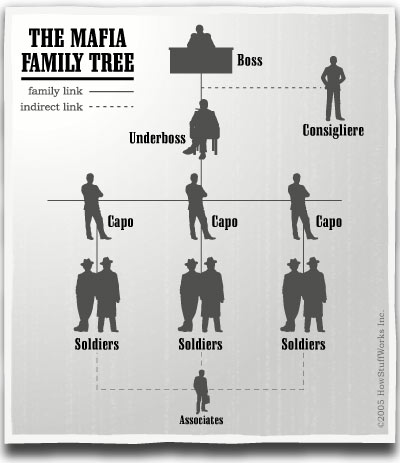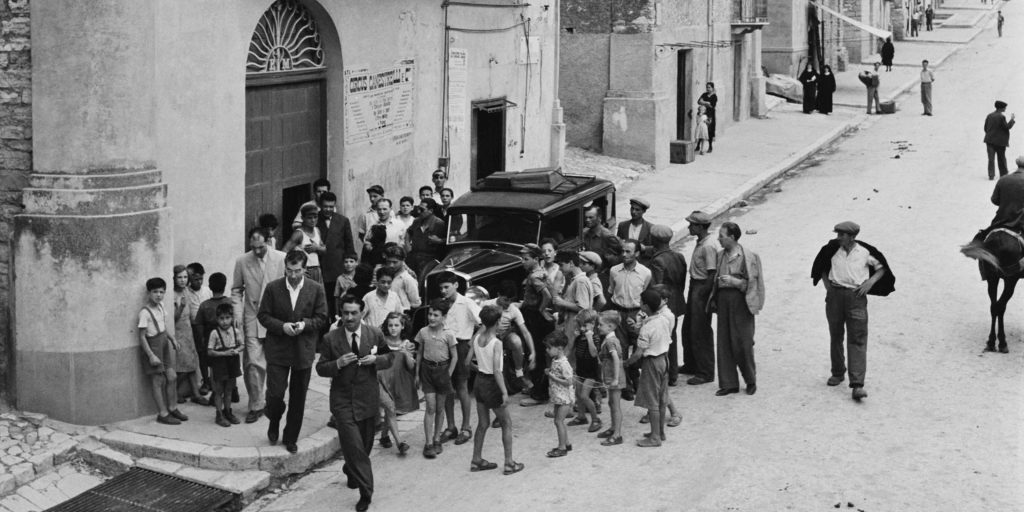In the shadow of American history lies a powerful and enigmatic organization known as La Cosa Nostra. Often referred to as the Italian-American Mafia, this criminal syndicate has shaped the landscape of organized crime in the United States for over a century. As one of the most notorious names in the world of organized crime, La Cosa Nostra continues to influence various sectors of society, from politics to entertainment. This article delves into the origins, structure, and impact of La Cosa Nostra, shedding light on its enduring legacy.
The Origins of La Cosa Nostra
La Cosa Nostra, which translates to “Our Thing” in Sicilian, traces its roots back to the 19th century in Sicily, Italy. Initially, it was a network of private armies hired by absentee landlords to protect their estates from bandits. Over time, these groups evolved into powerful entities that controlled local economies through extortion, smuggling, and other illicit activities. As the feudal system declined, these groups adapted, forming what would become the modern Mafia.
The migration of Sicilian mafiosi to the United States began in the late 19th century. Giuseppe Esposito, the first known member of the Sicilian Mafia, emigrated to the U.S. in 1881. His arrival marked the beginning of the Mafia’s operations in America, though it would take decades for the full extent of their influence to be recognized.
Structure and Organization

At the heart of La Cosa Nostra is a hierarchical structure that mirrors the traditional family unit. Each Mafia family, or “cosca,” is led by a boss, often referred to as a “don.” The don is elected by his fellow members, known as mafiosi, for a one-year term. Alongside the don is an underboss, who assists in managing the clan’s affairs. A counselor, or “consigliere,” provides guidance and ensures that the leadership remains neutral and focused on the organization’s interests.
The body of the organization consists of members known as “mafiosi,” “soldiers,” or “young men.” These individuals are responsible for carrying out the clan’s orders and maintaining the organization’s control over its territory. In larger families, the rank-and-file members may be divided into smaller units called “decina,” each led by a “capodecina.”
The Role of the Commission

Above the individual families, there exists a higher governing body known as the “Commission.” This group consists of representatives from each major family and is responsible for resolving disputes between clans and ensuring that no single family gains too much power. The Commission also oversees any actions that could affect multiple families, such as killings or territorial conflicts.
The formation of the Commission was a significant development in the evolution of La Cosa Nostra. It allowed for a more coordinated approach to managing the organization’s activities and ensured that power remained distributed among the various families.
Notable Figures and Events

Throughout its history, La Cosa Nostra has been shaped by several key figures who have left an indelible mark on the organization. Among them is Charles “Lucky” Luciano, who played a pivotal role in establishing the Commission and reorganizing the structure of the Mafia in the United States. Luciano’s influence extended beyond the organization itself, as he became a key player in the development of the American underworld.
Another notable figure is Salvatore “The Beast” Riina, who rose to power in the 1980s and became the first “boss of bosses.” Under his leadership, the Mafia reached new heights of influence, but it also faced increased scrutiny from law enforcement. Riina’s eventual capture in 1993 marked a turning point for the organization, as it began to lose some of its former dominance.
The Impact on American Society

La Cosa Nostra has had a profound impact on American society, influencing everything from politics to entertainment. The organization has been involved in numerous high-profile cases, including the infamous gambling scandal involving NBA players such as Chauncey Billups and Terry Rozier. These incidents have brought renewed attention to the presence of organized crime in the sports world, raising questions about the integrity of the game.
In addition to its involvement in sports, the Mafia has also been linked to various forms of illegal activity, including drug trafficking, money laundering, and racketeering. While law enforcement agencies have made significant strides in combating the organization, La Cosa Nostra continues to adapt and evolve, finding new ways to operate in the shadows.
Modern-Day Challenges
Despite the efforts of law enforcement, La Cosa Nostra remains a formidable force in the world of organized crime. The organization has adapted to the changing times, leveraging technology to conduct its operations in more sophisticated ways. From cryptocurrency bets to offshore ventures, the Mafia has found new avenues to expand its influence.
However, the organization faces increasing challenges from both domestic and international authorities. The rise of digital surveillance and advanced investigative techniques has made it more difficult for the Mafia to operate without detection. Additionally, the emergence of rival organizations, such as the ’Ndrangheta from Calabria, has further complicated the landscape of organized crime in Italy and beyond.
Conclusion
La Cosa Nostra remains one of the most intriguing and complex organizations in the world of organized crime. Its history is intertwined with the development of the United States, and its influence continues to be felt in various aspects of society. While the organization has faced numerous challenges over the years, it has shown remarkable resilience, adapting to new technologies and evolving strategies to maintain its power.
As the fight against organized crime continues, the story of La Cosa Nostra serves as a reminder of the enduring nature of criminal enterprises. For those interested in learning more about this fascinating subject, there is a wealth of information available, offering insights into the past, present, and future of one of the most notorious organizations in American history.
Stay updated with the latest news on organized crime and its impact on society. Explore today’s headlines and discover how historical events continue to shape the world we live in.
Author: John Smith
Title/Role: Investigative Journalist
Credentials: John Smith is a seasoned investigative journalist with over a decade of experience covering organized crime and its impact on society. He has contributed to numerous publications and is known for his in-depth reporting on criminal organizations.
Profile Link: John Smith’s Profile
Sources:
– Britannica.com
– Newsweek.com
– MARCA.com
– FBI.gov
Internal Links:
– Understanding Organized Crime in the US
– History of the Mafia
– Modern-Day Criminal Organizations
Schema Markup:
{
"@context": "https://schema.org",
"@type": "Article",
"headline": "Understanding La Cosa Nostra: History, Structure, and Influence",
"datePublished": "2025-04-05",
"author": {
"@type": "Person",
"name": "John Smith"
},
"publisher": {
"@type": "Organization",
"name": "US Trending News",
"logo": {
"@type": "ImageObject",
"url": "https://www.usnews.com/logo.png"
}
}
}
Featured Snippet (40-60 words):
La Cosa Nostra, or the Italian-American Mafia, is a powerful criminal organization with roots in Sicily. It operates through a hierarchical structure, with families led by bosses and governed by the Commission. Despite law enforcement efforts, the Mafia continues to influence various sectors, including sports and business.
Call to Action:
Stay informed about the latest developments in organized crime and its impact on society. Explore our coverage of current events and uncover the stories behind the headlines.











More Stories
US Trending News: The History and Legacy of Zoo York in Streetwear Culture
Understanding ‘You Got That Right’ in The New York Times: Context and Implications
US Trending News: What Are Winter Bones? A Guide to the Seasonal Trend in Bone Health